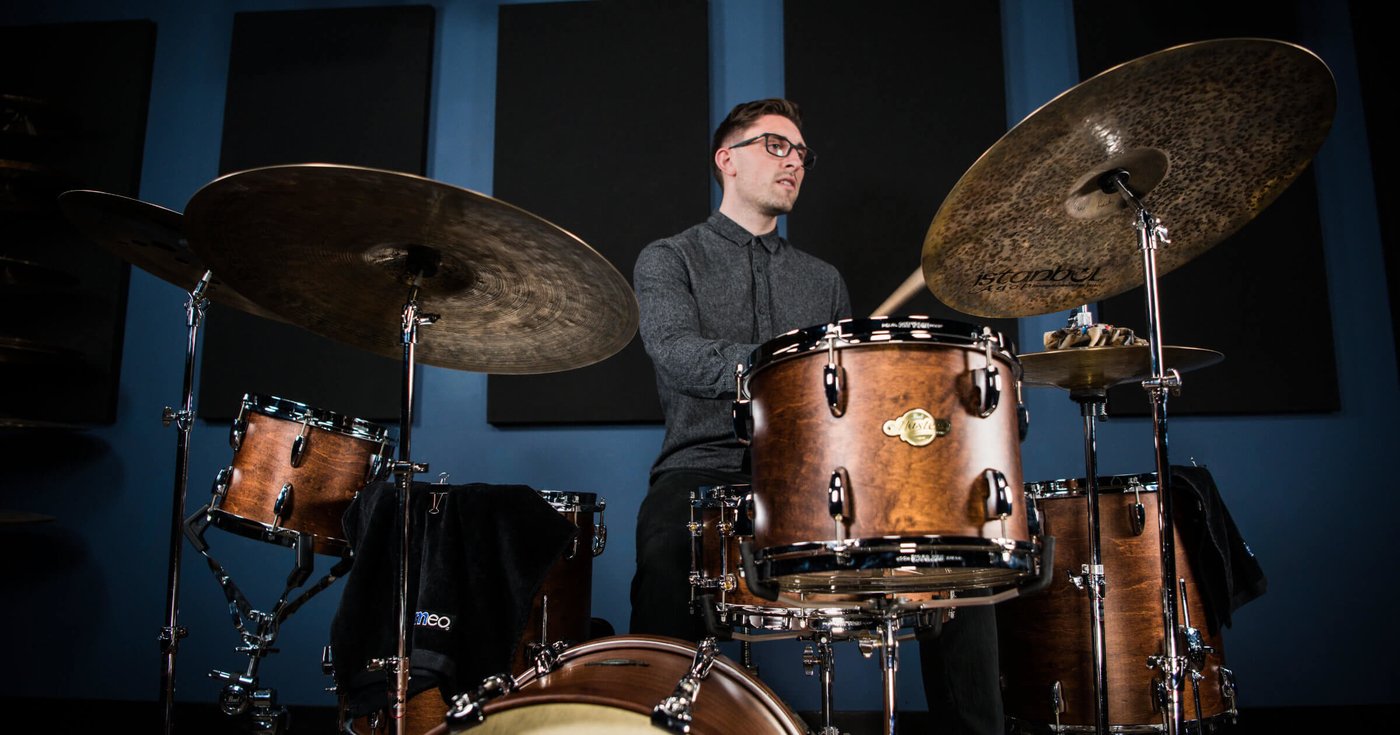
We’ve just launched the biggest, most comprehensive book of drumming styles out there – The Drummer’s Toolbox – which gives you an in-depth look at 101 different styles on the drums.
For a sneak peek of what’s inside this ultimate style guide, here are five types of drumming you’ve probably never heard before:
Also known as ‘the back shuffle’ or ‘upbeat shuffle’, you’ll accent the third note of every triplet grouping. Keep steady quarter notes on the bass drum and add a standard blues shuffle ride pattern over top. Add in the hi-hat foot on two and four.
To hear it in context, check out:
“Every Day I Have the Blues” – B.B. King
“Back at the Chicken Shack” – Jimmy Smith
This style originated in early 1980s on the Caribbean islands of Guadeloupe and Martinique. It fuses elements of calypso, biguine, and other West African music into one unique style. Most of these songs use drum machines, so when playing on a kit, we’re emulating electronic drums heard in the recordings. You’ll play a four-on-the-floor bass drum pattern, a standard Afro-Caribbean cross stick pattern (think calypso), and a syncopated 16th note hi-hat pattern.
To hear it in context, check out:
Kassav
Zouk Machine
This Afro-Brazilian style is based on a style that developed out of ancient traditions of the Yoruba people of West Africa. The cymbal pattern, based on 16th notes and 8th notes, comes from a ceremonial rhythm called ijexá. It was traditionally played on agogô bells or two cowbells at different pitches. If you don’t have these, you can play the pattern on the ride cymbal between the bell and the bow. Add a cross stick with steady quarter notes – synced to the hi-hat foot – and add in the bass drum on 2+ and 4+.
This rhythm was originally played by Vernel Fournier on a 1950s arrangement of the song Poinciana. Vernel did it open-handed (left hand on a ride, right hand on the snare), turned the snares off, and used a felt mallet. You’ll play the ride with your left hand on beats 2 and 4, and have your left foot in unison. Play the bass drum on beats 1 and 3 in the first bar, and beats 1, 3, and 4 in the second bar. Add in your right hand on the snare drum and play the last quarter note on the floor tom.
To hear it in context, check out:
“March of the Sad Ones” – Gilad Hekselman
“Poinciana” – Ahmad Jamal
Developed in the late ’60s/early ’70s in Washington DC, Go-go merges elements of soul, funk, and hip hop. The 16th notes on the hi-hat are swung (you can think of them as 16th note triplets). Once you get the bass and snare drum pattern, you’ll be able to figure out pretty much any Go-go groove.
To hear it in context, check out:
Chuck Brown
Trouble Funk
Experience Unlimited
If you want to dive deeper into these styles (and almost 100 more), learn about their history, build vocabulary, and find 1000 recommended recordings, get your copy of The Drummer’s Toolbox!
Brandon Toews is an author, educator, and performer based out of Vancouver, Canada. Brandon is the author of The Drummer's Toolbox, co-author of The Best Beginner Drum Book, and the Content Director at Musora, home to the award-winning online music education platforms Drumeo, Pianote, Guitareo and Singeo.


By signing up you’ll also receive our ongoing free lessons and special offers. Don’t worry, we value your privacy and you can unsubscribe at any time.
We use cookies for traffic data and advertising. Cookie Policy »